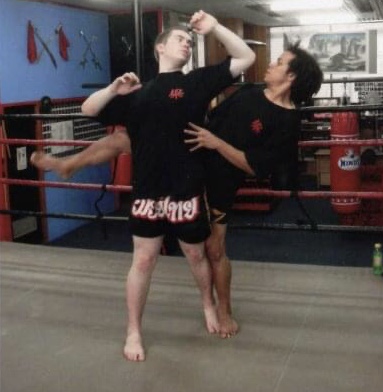Wing Chun and Mixed Martial Arts: How to Integrate Wing Chun Techniques into MMA Training
By Maurice Novoa a master under the Yuen Kay Shan, Ip Man and Pan Nam lineages.
Introduction:
Mixed Martial Arts (MMA) is a dynamic combat sport that combines various martial arts disciplines to create a well-rounded fighting style. As MMA continues to evolve, fighters are constantly exploring new techniques and strategies to gain an edge in the ring or cage.
One martial art that has gained attention for its unique approach is Wing Chun Kung Fu. In this comprehensive guide, we will explore how Wing Chun techniques can be effectively integrated into MMA training, enhancing a fighter’s arsenal and overall performance.
1. Centerline Theory and Striking Techniques:
Wing Chun’s centerline theory is a fundamental concept that emphasizes attacking and defending along the centerline of the opponent’s body. This principle can be incorporated into MMA training by utilizing precise and direct strikes to exploit openings and vulnerabilities. Straight punches, such as the Wing Chun straight punch (vertical fist), can be powerful tools for closing the distance, disrupting an opponent’s rhythm, and setting up combinations.
Additionally, Wing Chun’s focus on close-quarters combat and rapid hand techniques, such as chain punches and palm strikes, can be valuable in the clinch and infighting situations. These techniques allow MMA fighters to maintain a high volume of strikes while staying in control and minimizing the risk of counterattacks.
2. Trapping and Close-Range Grappling:
Wing Chun’s trapping techniques, derived from its close-quarters combat system, can provide MMA fighters with an advantage in close-range engagements. The ability to control an opponent’s limbs and disrupt their balance through trapping can create opportunities for strikes or takedowns.
Integrating these trapping techniques into MMA training involves developing sensitivity and timing, allowing fighters to anticipate and intercept their opponent’s movements. By utilizing techniques like pak sao (slapping hand) or lop sao (grabbing hand), fighters can redirect an opponent’s strikes and transition seamlessly between striking and grappling.
3. Wing Chun’s Chi Sao and Sensitivity Training:
Chi Sao, or “sticky hands,” is a unique training method in Wing Chun that enhances sensitivity, reflexes, and the ability to read an opponent’s movements. Incorporating Chi Sao drills into MMA training can improve a fighter’s ability to anticipate strikes, maintain control in grappling exchanges, and exploit openings.
Chi Sao training helps develop tactile sensitivity and the ability to flow with an opponent’s energy, allowing fighters to respond quickly and efficiently. This heightened sensitivity can be invaluable in MMA, where split-second reactions can determine the outcome of a fight.
4. Footwork and Timing:
Wing Chun’s emphasis on footwork and timing can greatly benefit MMA fighters. Agile footwork allows fighters to control the distance, create angles, and evade strikes. By incorporating Wing Chun’s footwork drills and concepts like the forward pressure step or side shuffle, fighters can effectively navigate the cage and set up their attacks.
Timing, another critical aspect of Wing Chun, is essential in MMA, where split-second opportunities must be seized. Wing Chun’s emphasis on simultaneous defense and offense trains fighters to exploit openings as they arise, delivering strikes with precise timing.
Conclusion:
Integrating techniques into MMA training can provide fighters with a unique set of tools and strategies to enhance their performance inside the cage. The centerline theory, striking techniques, trapping, close-range grappling, Chi Sao training, footwork, and timing are all valuable aspects of Wing Chun that can be effectively integrated into MMA.
However, it is crucial to remember that MMA is a diverse and multifaceted sport, requiring proficiency in various disciplines. Therefore, the incorporation of techniques should be complemented by a well-rounded skill set, including grappling, wrestling, and other striking styles.
By embracing the principles and techniques of Wing Chun alongside other martial arts, MMA fighters can develop a versatile and adaptable fighting style that combines the best of both worlds, ultimately increasing their chances of success in the highly competitive realm of mixed martial arts.

